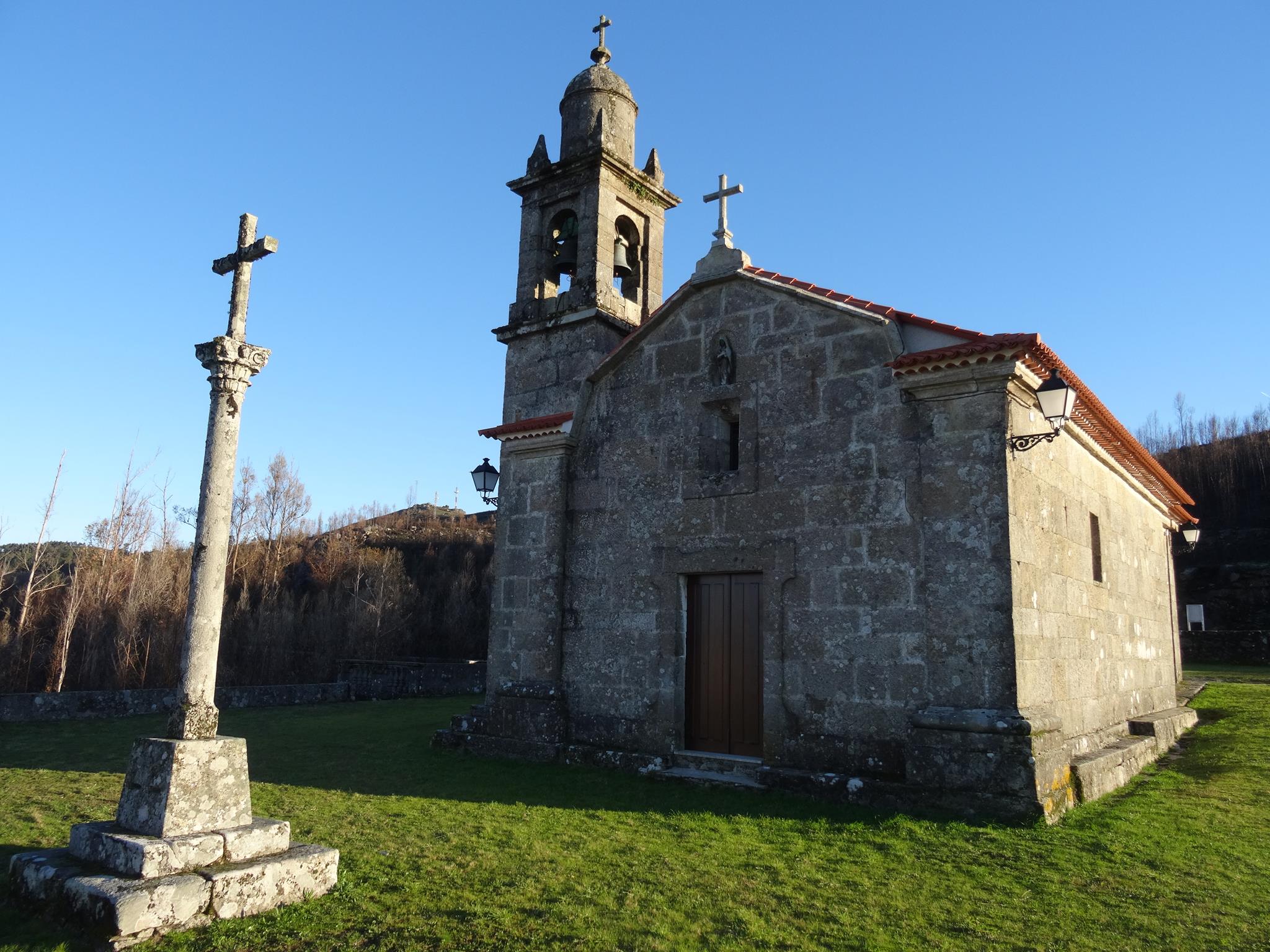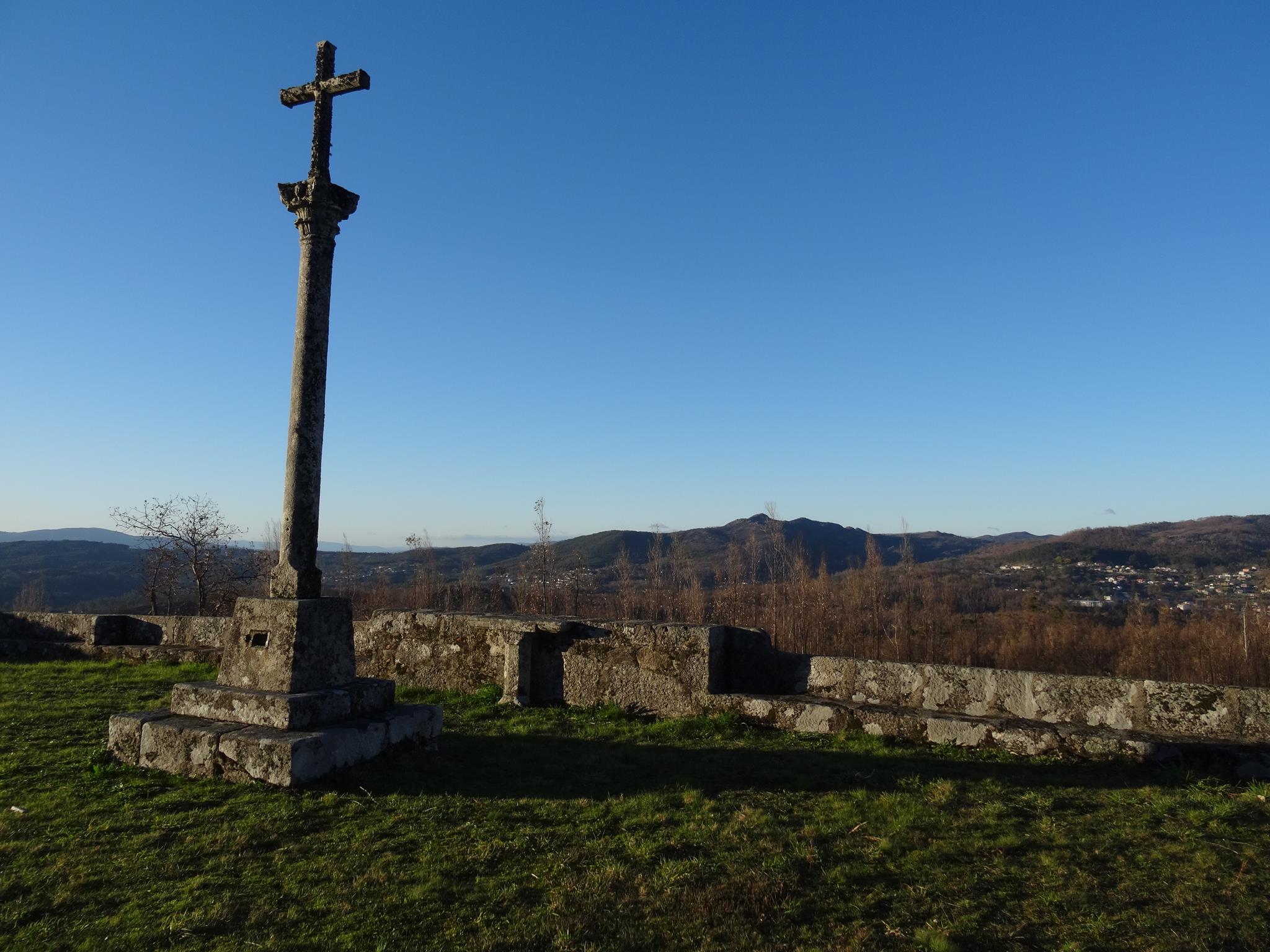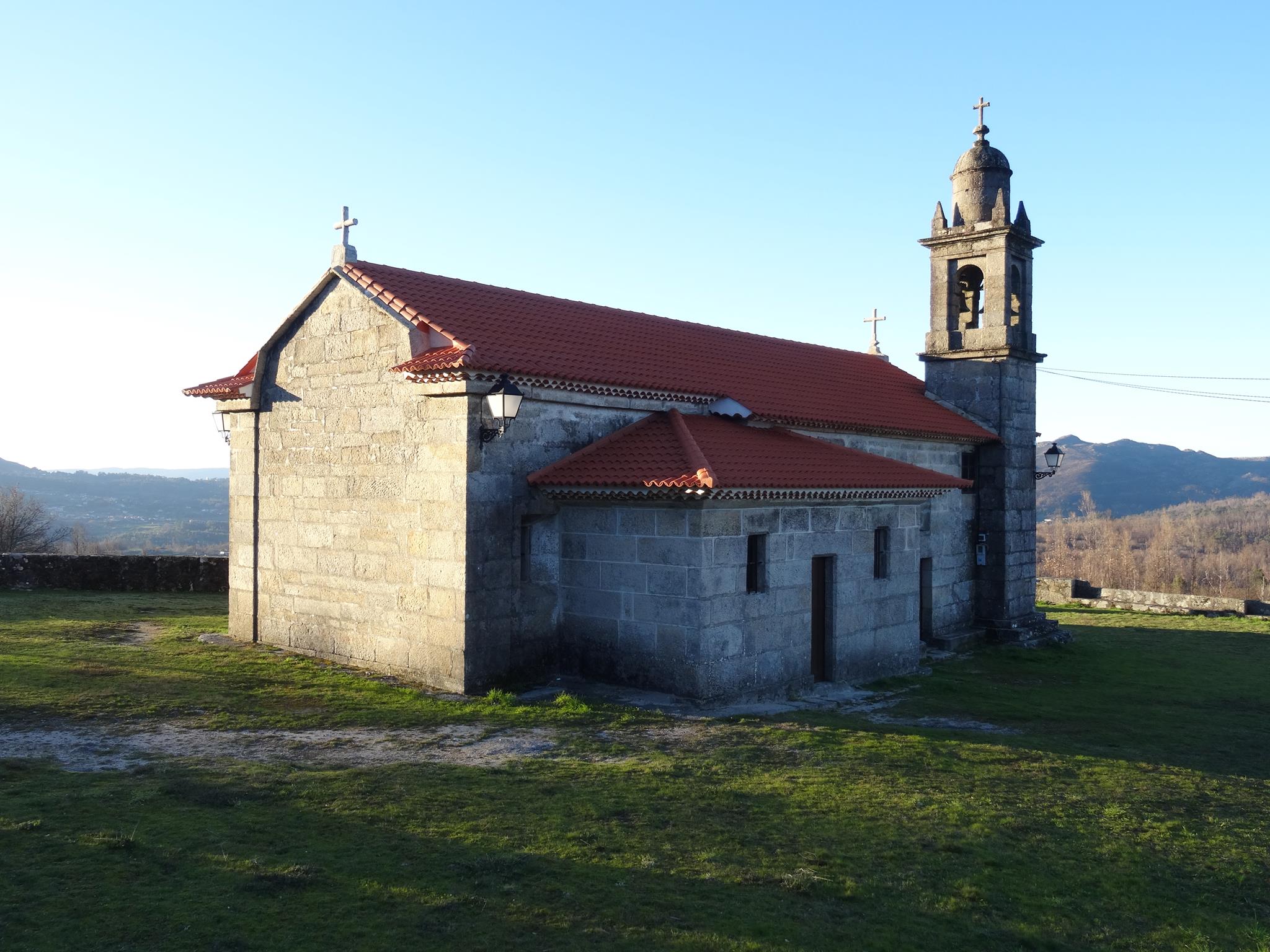Chapel of St Comba of Rebordelo
Baroque chapel built in the XVIII century with a rectangular floor plan and no altarpiece in the presbytery. It presents a strange North-South orientation that passes from the East-West canonical orientation, which must have been the object of an exemption from religious authorities. The most remarkable element is its square bell tower, with a raised section perforated in the direction of the four cardinal points. The whole structure is crowned with a semi-circular dome supported by a solid cylindrical tambour; in the corners there are pyramidal pinnacles. Next to the north facade soars an elevated transept on a double platform. The pedestal has a pyramid core. On the front side you can see the hollow of a breastplate that, looking west, unveils an inscription. The section of the column is square at the start, going into cylindrical. The capital imitates the Roman Corinthian style, with a face in high relief in the centre of each facade, between pairs of volutes. It ends in a Latin cross with a square section, which passes to the octagonal through the lower edges to the limit of the transept and the front face, which return to the original section. Situated approximately 140 m west of the chapel is a figurative transept without a shaft that receives the name of the Stone Cross of Coto da Xesta. People who go to the chapel in pilgrimage visit this crucifix and, after giving one or several laps around it, they beg favours of all kinds. On the weekend that follows Easter Sunday, they celebrate the traditional and multitudinous pilgrimage in honour of the Virgin of Health.




